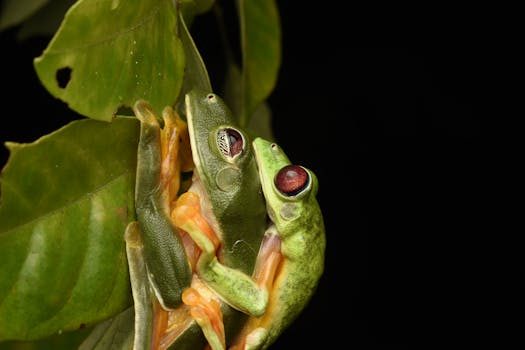Embarking on a journey with your amphibian friend can be a thrilling adventure, filled with unique challenges and experiences. Whether you’re a herpetology enthusiast or a pet owner, it’s important to understand the intricacies of traveling with amphibians to ensure their safety and well-being.
From navigating airline policies to preparing your pet for the trip, this guide provides all the necessary information to make your travel plans a success. Let’s dive into the world of amphibian travel together.
What Are The Best Practices For Traveling With Amphibians?
Adhering to best practices is crucial when it comes to traveling with exotic pets. The comfort and safety of your amphibian must be at the forefront of your planning. Here are some key tips:
- Ensure that your amphibian’s enclosure is secure and escape-proof.
- Maintain a stable temperature and humidity level similar to their natural habitat.
- Avoid feeding your pet right before the trip to prevent stress and mess.
- Hydrate your amphibian appropriately and have a plan for regular misting if necessary.
- Prepare a travel emergency kit that includes supplies such as water, a spray bottle, and any necessary medicine.
Researching the specific needs of your amphibian species can prevent potential health risks during travel.

How Do You Prepare Your Amphibian For A Trip?
Preparation is key when embarking on an adventure with your amphibian companion. Start by acclimating your pet to their travel container well in advance. This helps minimize stress and allows them to become comfortable with their temporary habitat.
Consult with a veterinarian experienced in amphibian care. They can provide a health certificate if needed and advise on ways to ensure pet comfort during the trip.
Additionally, practice handling your amphibian, if safe, to ease the process of transferring them to and from their enclosure.
What Are The Airline Policies For Traveling With Amphibians?
Airline policies for traveling with amphibians vary significantly, so it’s essential to contact the airline well ahead of your trip. Some airlines may not allow amphibians in the cabin, requiring them to be checked as cargo under specific conditions.

When flying, provide documentation such as health certificates and be aware of size and weight restrictions for pet carriers. Remember, the well-being of your amphibian is paramount, and choosing the right airline can make all the difference.
What Is The Cost Of Traveling With Amphibians?
The cost of traveling with amphibians can include airline fees, veterinary visits for health certificates, and specialized travel containers. It’s important to budget for unforeseen expenses such as emergency vet visits during your travels.
Investing in a high-quality travel enclosure that meets all requirements is not just a cost; it’s an investment in your pet’s safety.
How Do You Transport Amphibians Safely?
To transport amphibians safely, use a container that allows for sufficient airflow without letting in drafts. It should be insulated to maintain temperature consistency and lined with a moist substrate to keep your pet hydrated.

During the trip, monitor your amphibian regularly, paying close attention to any signs of distress. Ensure the container is kept out of direct sunlight and away from loud noises to minimize stress.
What Are The Legal Requirements For Bringing Amphibians Into The U.S.?
When bringing amphibians into the U.S., you must comply with regulations set by organizations such as the U.S. Fish and Wildlife Service and the Centers for Disease Control and Prevention (CDC). This may include obtaining permits, adhering to quarantine procedures, and ensuring that your pet is not an endangered species.
It’s also vital to be informed about the Lacey Act, which governs the import of wildlife, including amphibians, to prevent the spread of invasive species and diseases.
What Are The Most Common Amphibians Found During Travels?
Traveling can lead to encounters with fascinating amphibian species. Fire salamanders, for example, are a common sight in European forests, while the U.S. is home to a diversity of frog and salamander species.

If your travels take you to exotic locations, you might spot unique species such as the Indo-Malayan mountain pit viper in the Kaeng Krachan National Park or partake in herpetology tours organized by companies like Naturetrek.
In conclusion, traveling with amphibians can be a rewarding experience with proper preparation and knowledge. By following this guide and addressing your ICP’s interests and pain points, you can ensure a safe and enjoyable trip for both you and your amphibian friend.
